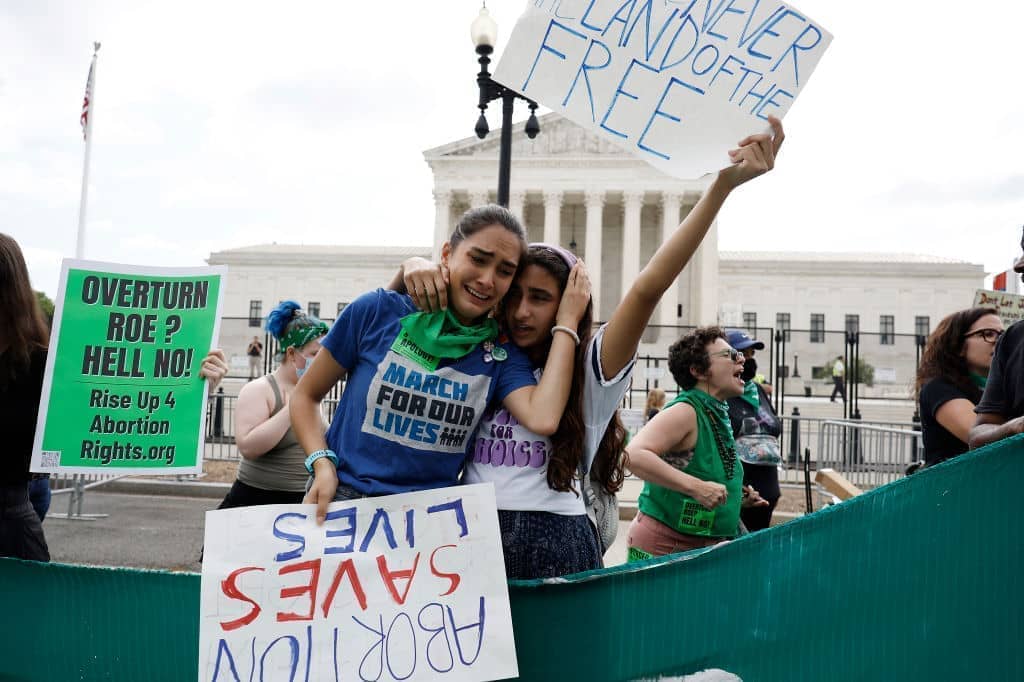The US Supreme Court has today officially overturned Roe v. Wade, the landmark ruling which gave women the constitutional right to have an abortion. The Court had been examining the case of Dobbs v Jackson Women’s Health, which was challenging a Mississippi law which banned abortion after 15 weeks.
Following the Dobbs decision, some states will now serve as sanctuaries for the unborn, while others will be sanctuaries for women seeking abortions, sometimes right up until the moment of birth.
Let’s start with the states that have ‘trigger laws’ to ban abortion if Roe is overturned. They are Arkansas, Kentucky, Idaho, Louisiana, Mississippi, Missouri, North Dakota, Oklahoma, South Dakota, Tennessee, Texas, Wyoming and Utah.
The states that codify abortion into law irrespective of the Supreme Court are California, Colorado, Connecticut, Delaware, Hawaii, Illinois, Maine, Maryland, Massachusetts, Nevada, New Jersey, New Mexico, New York, Oregon, Rhode Island, Vermont, Washington and Washington, DC.
In other words, abortion states outnumber pro-life states 18 to 13, while the rest have neither an immediate ban nor a codification in place. For these states, the heightened tensions will make for a fierce debate in the coming days. People on both sides of the issue will be fighting vehemently, and abortion will become a much larger political issue in elections to come.
There are others among the 19 states without ‘trigger laws’ that may soon restrict abortion. According to the Guttmacher Institute, a Planned Parenthood-funded pro-choice think tank, states that may act against abortion in the coming days are Alabama, Arizona, Georgia, Iowa, Michigan, Ohio, South Carolina, West Virginia and Wisconsin. Some of these states have pre-Roe legislation that will come back into effect, such as Arizona and Michigan, while others have laws that prevent abortions six weeks after pregnancy, such as South Carolina and Ohio.
Congress will certainly try to pass legislation regulating abortion and preventing the states from banning it outright. The most extensive act on abortion before the ruling was the Women’s Health Protection Act in 2021, which would have forced all the states to provide some access to abortion. It was passed by the House but died in the Senate. However, with the overturning of Roe v. Wade, Congress may try to resurrect it.
There’s also the matter of public opinion, which pro-choicers have repeatedly said supports Roe v. Wade. Yet polls have consistently found that wide majorities support banning abortion in most cases in the second and third trimesters as well as backing other restrictions like parental notification statutes. With abortion policy back in the hands of voters, it will be interesting to see how these preferences translate into law.
Adding to the tension, Jane’s Revenge, a pro-abortion group, has been vandalising and firebombing pregnancy centres around the United States, most recently in Washington, DC. They became active when a Dobbs decision draft authored by judge Samuel Alito was leaked. In various posters around DC, the group has threatened a ‘Night of Rage’ after the Dobbs ruling comes down.
Either way, drama is sure to follow. The Dobbs decision directly affects a pivotal issue in American society, and there will be plenty of outrage to go around. But for the first time since the 1970s, the American people will be allowed to democratically deliberate on the issue of abortion.
This article first appeared in The Spectator’s World edition.






Comments